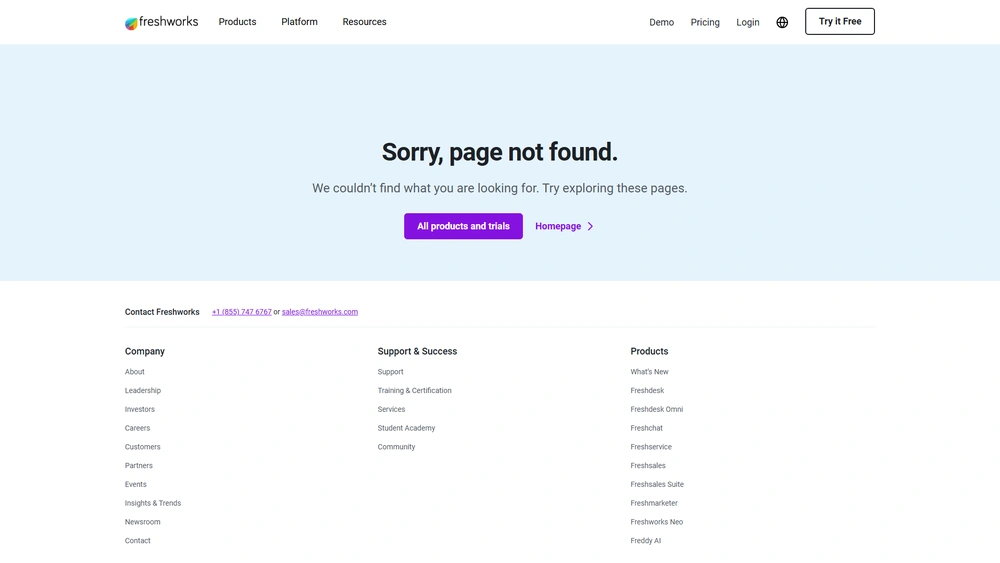Freshservice Overview & 2025 Industry Position
Freshservice has emerged as a front-runner in IT Service Management (ITSM), attracting mid-sized businesses and scaling enterprises with its intuitive design, rapid deployment, and AI-powered automation. In 2025, Freshservice remains an ideal choice for organizations seeking to unify service operations, boost internal support productivity, and integrate seamlessly into modern IT stacks. As ITSM shifts from legacy systems to hybrid digital-talent workflows, Freshservice’s blend of functionality and simplicity makes it a strategic fit for forward-looking businesses.
From Launch to 2025 Journey
Freshservice debuted in 2014 as a cloud-first ITSM solution under the Freshworks umbrella. From the start, it challenged complex, on-premise solutions with a clean UI, low setup burden, and affordable pricing. Key milestones include:
- 2016: ITIL-certified modules introduced for standard change/problem/incident workflows.
- 2018: AI-driven Freddy bot launched to handle queries and automate L1 tasks.
- 2020: Configuration Management Database (CMDB) improvements for digital asset tracking.
- 2021: Enhanced analytics dashboard and no-code workflow automation engine.
- 2023: Marketplace expanded with 700+ integrations.
- 2025: GenAI capabilities for auto-triage, agent assistance, and predictive SLAs.
In 2025, Freshservice is doubling down on AI-powered workflows and cross-departmental service ops, aiming to reduce human workload while improving SLA compliance and CX with automation-first design.

Freshservice Key Features
Freshservice delivers a robust ITSM toolkit spanning the entire service lifecycle. Core features include:
- Incident and change management: ITIL-aligned modules for issue resolution and service continuity.
- Self-service portal: Branded portals with AI suggestions and service catalog.
- AI-powered automations: Freddy copilot, ticket categorization, and task routing.
- No-code workflow automation: Drag-and-drop rules for approvals, alerts, and conditional tasks.
- Asset discovery: CMDB-backed tracking and smart asset lifecycle management.
- Unified service desk: Single platform serving IT, HR, finance, and legal teams.
- Analytics and reporting: SLA tracking, ticket trends, service KPIs, and customizable dashboards.
Pro Tip: Use Freshservice’s workflow automator to eliminate manual approvals—it’s a game-changer for scaling service delivery across growing teams.
Workflow & UX
Freshservice offers one of the cleanest and most accessible interfaces in the ITSM space. It organizes service modules into intuitive tiles, with dynamic forms that adapt by issue type or ticket properties. Agents benefit from Freddy suggestions, quick-reply templates, and helpful sidebars. Admins can configure user roles effortlessly, clone workflows, and track performance in real time. The UI supports keyboard navigation and mobile responsiveness, ensuring productivity across devices.
Freshservice Pricing Analysis & Value Metrics
| Plan | Price (user/month) | Key Inclusions |
|---|---|---|
| Starter | $29 | Incident mgmt, knowledge base, SLAs, mobile app |
| Growth | $59 | Requester portal, automation, analytics, asset mgmt |
| Pro | $115 | Change mgmt, CMDB, sandbox, orchestration, full workflow automation |
| Enterprise | $145 | AI Freddy copilot, service catalog, custom modules, advanced support |
Value Assessment: Freshservice pricing is competitive for its feature depth, especially for scaling ops needing automation, custom agent routing, or AI. SMBs on modest budgets benefit most from Starter and Growth tiers.
Competitive Landscape
Freshservice competes with both legacy ITSM vendors and modern SaaS challengers:
| Brand | Key Difference | Best For |
|---|---|---|
| ServiceNow | Deep enterprise functionality but high complexity & cost | Global enterprises |
| Jira Service Management | Tight developer integration, agile workflows | Tech-driven orgs |
| Zendesk | Strong in CX support, weak in ITIL depth | Customer-service teams |
| ManageEngine | Feature-rich but less intuitive UI | IT specialists |
Compared to these, Freshservice Pro offers a mid-market sweet spot of flexibility, clean UI, and scalable automation.
Common Use Cases
- IT Helpdesk: Automate incident resolution, track SLAs, manage assets.
- Employee Onboarding: Use service catalog to coordinate HR, IT, and facilities checklists.
- Educational Institutions: Streamline student and faculty support requests across departments.
- Healthcare Management: Track compliance and schedule changes for facility equipment and software licenses.
- MSPs (Managed Service Providers): Deliver multi-client support with automation and sandbox capabilities.
Integrations & Ecosystem Reach
Freshservice supports over 750 integrations spanning key operational systems:
- Communication: Slack, Microsoft Teams, Zoom
- Monitoring: Datadog, Nagios, AWS, Azure
- CRM: Salesforce, Freshsales
- SaaS Ops: Okta, Duo Security, Intune
- Automation & Workflows: Zapier, Tray.io
Easily extend Freshservice workflows via APIs, low-code logic apps, and contextual integration with IT tools and HR platforms.
Pros & Cons
- Pros:
- User-friendly UI and quick onboarding
- Robust automation engine and AI assistant
- Deep ITIL functionality with modular design
- Wide integration library
- Cons:
- Advanced automation in higher priced tiers
- Lacks native developer-centric tools (vs. Jira SM)
- CMDB configuration can get complex
Final Thoughts
Freshservice remains a top ITSM platform for growing businesses in 2025, offering versatility, automation, and great UX. It’s especially strong for mid-market teams that want to scale without overwhelming complexity. While larger enterprises may still lean toward ServiceNow, and developers toward Jira SM, Freshservice hits the modernization sweet spot with usability, AI acceleration, and competitive pricing across the curve.
Freshservice FAQ
Yes, Freshservice supports multiple ITIL processes including incident, problem, change, and asset management across all standard tiers.
Yes, a full-featured mobile app is available for both iOS and Android, enabling agents to resolve tickets and manage workflows on the go.
Freshservice includes no-code automation rules, Freddy AI suggestions, approval routing, ticket categorization, and time-based trigger events.
Yes, external stakeholders such as customers or partners can submit tickets and check status via a custom portal with limited access.
Most businesses are able to fully launch within 10–15 days, thanks to out-of-the-box templates and simple setup flows.
